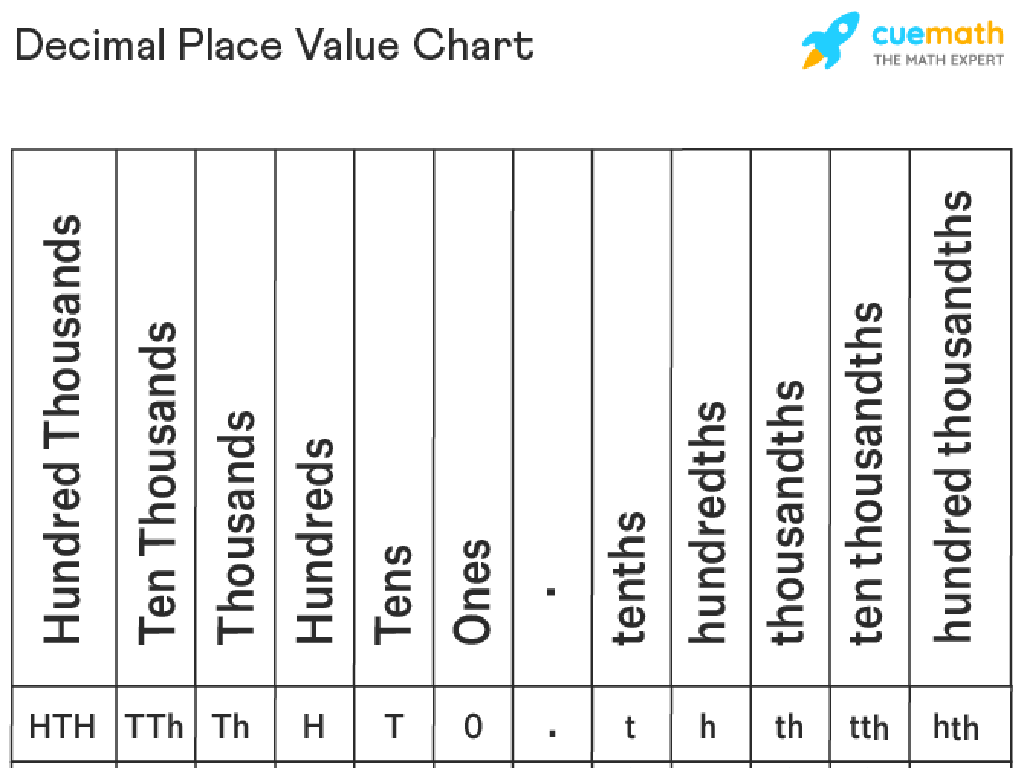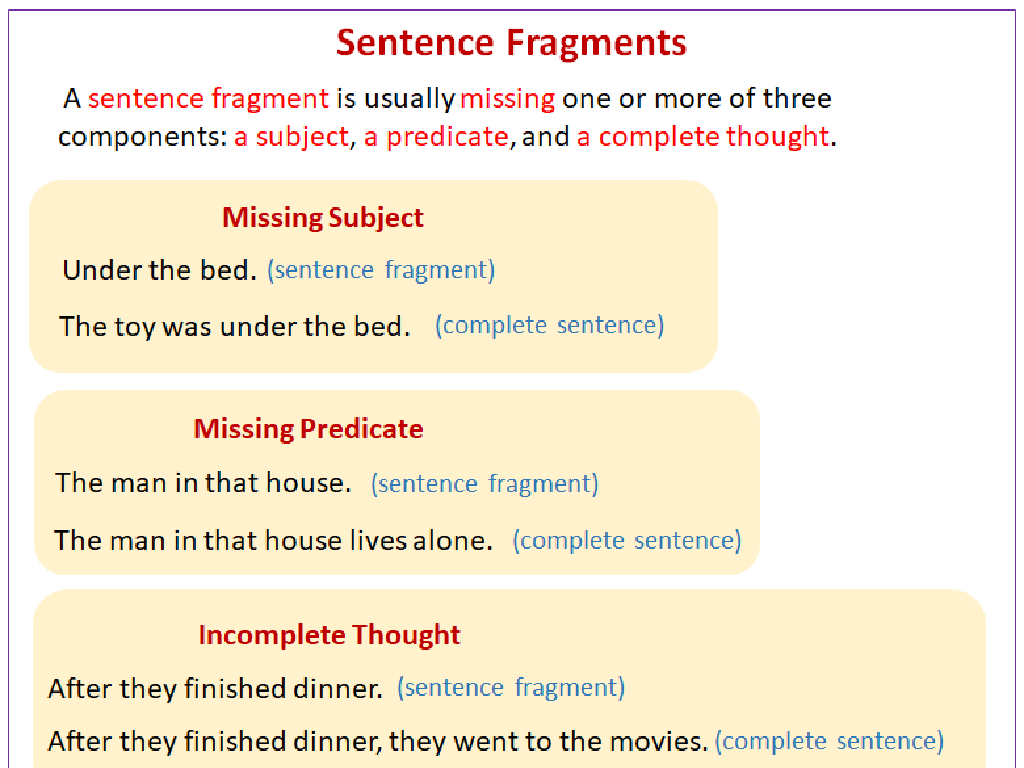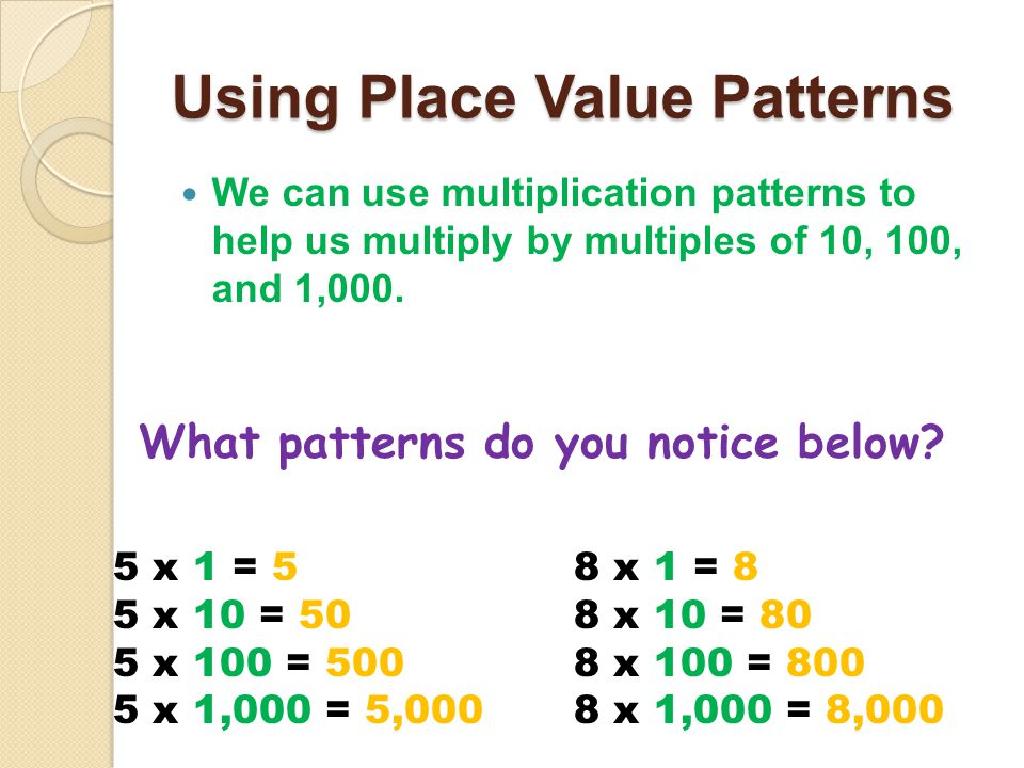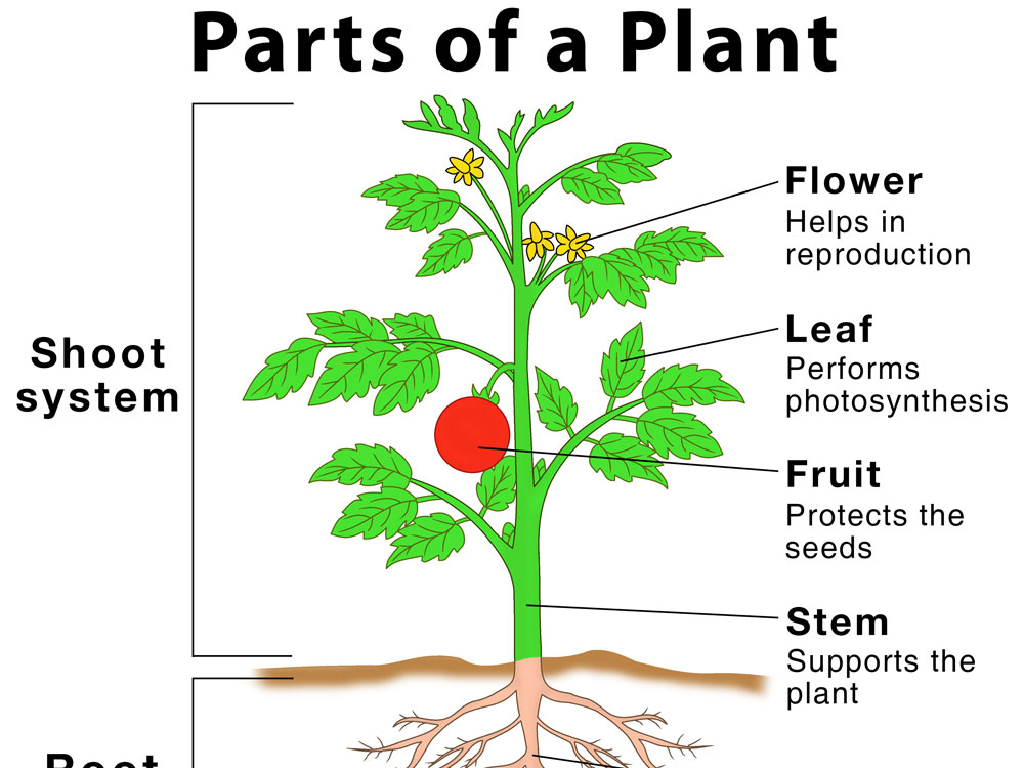Write A Linear Equation From A Graph
Subject: Math
Grade: Eighth grade
Topic: Linear Equations
Please LOG IN to download the presentation. Access is available to registered users only.
View More Content
Introduction to Linear Equations
– Understanding Linear Equations
– A linear equation represents a constant rate of change, like speed.
– Linear relationships in real life
– Examples: cost of apples per pound, temperature drop overnight.
– Review graph components
– X-axis (horizontal), Y-axis (vertical), origin (0,0) where axes intersect.
– Writing equations from graphs
– Use the slope and y-intercept to write the equation from a graph.
|
Begin with a basic explanation of linear equations, emphasizing their constant rate of change, which is visually represented as a straight line on a graph. Provide relatable examples such as the cost of apples varying with weight or temperature changes over time to illustrate linear relationships. Review essential graph components including the x-axis, y-axis, and the origin, ensuring students are comfortable with these concepts. Finally, guide students on how to derive a linear equation from a graph by identifying the slope and y-intercept, which are key to writing the equation in the form y = mx + b. Encourage students to practice with different graphs to solidify their understanding.
Identifying Linear Equations in Graphs
– Characteristics of linear graphs
– Straight line, constant rate of change
– Finding slope and y-intercept
– Slope (rise over run), y-intercept (where line crosses y-axis)
– Linear vs non-linear graphs
– Linear graphs are straight; non-linear can curve or bend
– Graphing linear equations
|
This slide aims to help students recognize and understand linear equations when presented in graph form. Emphasize that linear graphs will always form a straight line, which indicates a constant rate of change – this is a key characteristic of linear relationships. Show how to find the slope of the line by calculating the rise over the run between two points on the line, and identify the y-intercept, the point where the line crosses the y-axis. Contrast linear graphs with non-linear ones by highlighting that non-linear graphs do not have a constant rate of change and can curve or bend. Encourage students to practice by graphing linear equations themselves and identifying the slope and y-intercept from various linear graphs.
Slope-Intercept Form: Graphs to Equations
– Introduction to y = mx + b
– The formula for a line’s equation in a coordinate plane
– ‘m’ represents slope
– Slope ‘m’ measures the steepness of the line
– ‘b’ is the y-intercept
– Point where the line crosses the y-axis
– Converting graphs to equations
– Use a graph’s points to find ‘m’ and ‘b’, then write the equation
|
This slide introduces the slope-intercept form of a linear equation, which is a fundamental concept in algebra. The equation y = mx + b is a way to describe a straight line on a graph, where ‘m’ is the slope, indicating the line’s steepness, and ‘b’ is the y-intercept, the point where the line crosses the y-axis. Provide examples of how to extract these values from a graph and form the equation. Encourage students to practice by picking two points on the line to calculate the slope and identify the y-intercept visually. This will help them understand how to write the equation of a line from a graph, which is a critical skill in algebra.
Calculating Slope from a Graph
– Find two points on the line
– Pick any two points where the line crosses the grid
– Use the slope formula
– Apply (y2-y1)/(x2-x1) to find the slope
– Class participation: practice
– Students will practice finding slope on different graphs
– Understand slope significance
– Slope shows how steep the line is
|
This slide is aimed at teaching students how to calculate the slope of a line from a graph. Start by explaining how to accurately identify two distinct points on a line, preferably where the line crosses the grid for easier calculation. Then, introduce the slope formula (y2-y1)/(x2-x1) and demonstrate how to plug in the coordinates of the chosen points to calculate the slope. Engage the class with hands-on practice by having them find the slope from various graphs. Emphasize the importance of understanding the slope as a measure of the line’s steepness, which reflects how variables in the equation change in relation to each other. Provide detailed guidelines for the teacher to facilitate the activity, including different examples of linear graphs for students to work on.
Determining the Y-Intercept
– Locate line’s crossing on y-axis
– The point where the line hits the y-axis, e.g., (0, 3)
– Grasp y-intercept significance
– It’s the starting value when x is zero
– Practice with varied lines
– Identify y-intercept in graphs with different slopes
– Relate y-intercept to real-life
– Think of it as a base payment or a starting point in scenarios
|
This slide aims to help students understand the concept of the y-intercept in linear equations. The y-intercept is the point where the line crosses the y-axis, and it represents the value of y when x is zero. It’s a crucial part of the equation of a line and can be seen as the starting point of the line on a graph. Students should practice finding the y-intercept from graphs with different slopes to solidify their understanding. Relating this concept to real-life situations, such as a base payment in a job or the starting point of a race, can help students grasp its importance. Encourage students to come up with their own examples and share them in class.
Writing Equations from Graphs
– Steps to write equations
– Identify the slope and y-intercept from the graph
– Use slope and y-intercept
– y = mx + b, where m is slope and b is y-intercept
– Group activity: Practice
– In groups, students will write equations from graphs given
– Share and discuss results
– Groups will present their equations and reasoning
|
This slide introduces the process of writing linear equations from graphs, a key skill in understanding linear relationships in algebra. Start by explaining the step-by-step method to identify the slope (rise over run) and the y-intercept (where the line crosses the y-axis) from a graph. Emphasize the equation form y = mx + b, where ‘m’ represents the slope and ‘b’ the y-intercept. For the group activity, provide a variety of graphs with different slopes and y-intercepts. Encourage collaboration and discussion within groups to foster a deeper understanding. After the activity, have each group share their equations and explain how they arrived at their answers. This peer learning opportunity reinforces the concept and allows students to learn from each other.
Class Activity: Craft Your Linear Graph
– Draw your linear graph
– Calculate the slope (m)
Use rise over run between two points to find slope
– Find the y-intercept (b)
The point where the line crosses the y-axis
– Write the equation y = mx + b
Combine slope (m) and y-intercept (b) into the equation
|
In this activity, students will apply their knowledge of linear equations by creating their own graph on graph paper. They will then use two points on their line to calculate the slope, or ‘rise over run.’ After determining the slope, they will identify the y-intercept, which is where their line crosses the y-axis. Finally, students will write the linear equation in slope-intercept form, y = mx + b, using their calculated slope and y-intercept. For the teacher: Prepare to assist students in graph drawing and slope calculation. Offer graph paper and encourage creativity in their graph designs. Possible variations of the activity could include creating graphs with positive, negative, zero, or undefined slopes, and comparing equations with classmates.
Review and Q&A: Linear Equations from Graphs
– Recap today’s key points
– Open floor for questions
– Discuss common mistakes
– Mixing up positive/negative slopes, misidentifying y-intercept
– Tips to avoid errors
– Double-check slope calculation, plot points carefully
|
This slide aims to consolidate the learning from the lesson on writing linear equations from graphs. Begin with a brief recap of the main points, such as identifying the slope and y-intercept, and the form of a linear equation (y = mx + b). Then, invite students to ask any questions they have, fostering an interactive environment. Address common errors, such as confusing the signs of the slope or inaccurately locating the y-intercept on the graph. Emphasize the importance of checking work by recalculating the slope and replotting points. Provide tips like using a ruler for accuracy when determining the slope from a graph and always writing down the steps when formulating the equation. Encourage students to share their strategies for avoiding mistakes, creating a collaborative learning experience.
Homework: Writing Linear Equations from Graphs
– Practice writing equations from graphs
– Complete the provided worksheet
– Worksheet has different linear graphs to explore
– Each graph represents a linear equation
– Identify the slope and y-intercept from each graph
– Next class: Systems of Equations
|
This homework assignment is designed to reinforce the students’ ability to write linear equations by analyzing the slope and y-intercept from given graphs. The worksheet includes a variety of linear graphs to ensure that students can apply the concept in different scenarios. Encourage students to remember the formula y = mx + b, where m is the slope and b is the y-intercept. For the next class, students should be prepared to expand their understanding of linear relationships by learning about systems of equations, where they will deal with multiple linear equations interacting with each other. This will be a stepping stone towards solving more complex algebraic problems.





